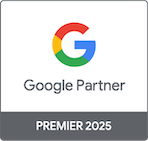These are low-value or fraudulent sites, such as clickbait pages and spammy content platforms. They waste ad spend and harm brand image.
How to build a placement strategy to avoid bad Ad placements, and ensure Ads only show in high-performing environments
Abisola Tanzako | Oct 17, 2025

Table of Contents
- Why a strong placement strategy matters for avoiding bad Ad placements
- What counts as bad Ad placements in digital advertising?
- The consequences of bad Ad placements on campaign performance
- How to build a placement strategy that prevents bad Ad placements
- What does being a high-performing brand mean to you?
- Locate the problem placements by reports
- Create and maintain exclusion lists
- Whitelist trusted sites
- Leverage technology for automated protection
- Check and recheck
- ClickPatrol: How to eliminate bad Ad placements automatically
- Best practices for advertisers to eliminate bad Ad placements
- Take control of your Ad placements for maximum performance
Bad ad placements demonstrate why it is essential for brands to develop a placement strategy that prioritizes quality over quantity.
It is estimated that by 2025, advertisers will lose $84 billion annually to ad fraud and low-quality placements. Often, brands struggle with placing ads in poor environments.
This is because poor placements occur on low-quality, irrelevant, or clickbait-driven websites, which ultimately burn the budget and fail to convert.
This guide walks you through building a placement strategy that keeps your ads in trusted, high-performing environments, with ClickPatrol handling the hard work.
Why a strong placement strategy matters for avoiding bad Ad placements
Ad placement is like your brand being on stage, where the stage is shaking or your brand is with the wrong crowd, the message is wasted.
Advertisements on spammy blogs, irrelevant forums, or clickbait websites are a waste of impressions and may even hurt brand trust. The importance of a good placement strategy is explained like this:
- Brand safety: Ads that appear next to unsafe, offensive, or inappropriate content can significantly harm how consumers perceive a brand and reduce overall trust in its reputation.
- ROI optimization: Ineffective placements consume the budget and often fail to convert.
- Audience relevance: According to Nielsen, aligning ads with the right contextual environment can significantly enhance engagement and overall campaign effectiveness, as the surrounding content helps reinforce the brand message.
- Transparency and control: By having a defined placement strategy, advertisers can easily understand where their money is spent and every impression is accounted for.
What counts as bad Ad placements in digital advertising?
Bad Ad placements are those that offer little to no value to advertisers in certain situations; such placements can damage a brand’s reputation.
They occur in open web inventory as well as in lawful ad networks. Common examples include:
- Low-quality content sites: Web pages with low-quality or duplicated content are often created solely to run advertisements.
- Clickbait and fake news: Bypass and Other Sensational Headlines that Fail to Engage.
- Irrelevant content: Sites whose audience or content is not relevant to your brand.
- Bot or fraudulent sites: A significant portion of ad budgets is often lost to invalid traffic, fraudulent impressions, and non-viewable inventory, which occur when ads are served on low-quality or bot-driven websites.
- Unsafe or objectionable material: Sites that encourage hate speech, violence, or adult content.
- Ad-overloaded pages: Sites with numerous advertisements placed on them become less accessible to users. These environments all contribute to wasted spend, inaccurate reporting, and poor campaign performance.
The consequences of bad Ad placements on campaign performance
Placing advertisements in poor or irrelevant spaces may lead to long-term effects on brands:
- Wasted spend: Bad placements not only damage the brand image but also cost the advertiser a significant amount of money on advertisements. The 2023 Ad Quality and User Experience Report by GeoEdge found that poor Ad experiences prompt users to leave sites and apps immediately, resulting in brands losing impressions, engagement, and ad spend.
- Crippled analytics: Traffic generated by bots inflates metrics, resulting in invalid optimization decisions.
- Lower conversion rates: Visitors to irrelevant websites are less likely to convert.
- Brand damage: Appearing alongside unsuitable material can be highly damaging to a reputation.
- Loss of credibility with stakeholders: Clients or executives might lose faith in the success of the digital advertising investment. The strategic placement plan is not a luxury, but rather a business necessity that should be well-defined.
How to build a placement strategy that prevents bad Ad placements
A balance between automation, data analysis, and planning is necessary to design an effective placement strategy. This is the way to do it:
What does being a high-performing brand mean to you?
Not every site is right for every advertiser. Start by defining what quality placement means for your brand:
- Relevance to the audience: Will the site resonate with your target audience?
- Content quality: Does it offer original and trustworthy content?
- Engagement metrics: Does the traffic lead to conversions or other meaningful actions?
- Brand safety: Does the site align with your brand’s values?
- Technical standards: Are the ad slots well-formatted and displaying correctly?
Locate the problem placements by reports
The vast majority of ad sources (such as Google Ads, DV360, or Meta Ads) provide a placement report that shows the exact location of your advertisement. These reports should be reviewed regularly to:
- Indicate unimportant or nonproductive sites
- Identify suspicious or fraudulent traffic
- Identify the best publishers to reinvest in
This data-driven process is the cornerstone of designing effective exclusion and inclusion lists.
Create and maintain exclusion lists
Exclusion lists enable advertisers to block websites, apps, or types of content that do not align with their goals. Consider excluding:
- Adult, gambling, or political content
- Known bad domains (from trusted sources)
- Placements with a history of poor performance
Remember to keep exclusion lists updated, as new bad placements emerge regularly.
Whitelist trusted sites
While exclusion lists help mitigate risks, whitelists are proactive and specify exactly where ads should appear. Focus on:
- Trusted publishers and reputable news platforms
- Relevant websites in your niche
- Quality partner networks
Whitelisting may limit reach slightly, but it significantly improves performance and protects your brand image.
Leverage technology for automated protection
It is not practical to manually analyze every placement in large-scale campaigns. Automation tools like ClickPatrol can help. ClickPatrol continuously scans ad campaigns and blocks poor or inappropriate placements, ensuring your ads appear only in reputable, high-performing environments.
Benefits include:
- Detecting bad placements in real time
- Automatic exclusion of low-value environments
- Continuous performance improvement and higher ROI
Check and recheck
A placement strategy is not static; it evolves. Regular reviews help keep it effective:
- Evaluate placements weekly or monthly
- Update exclusion and whitelist rules
- Analyze performance by placement to refine targeting
- Stay ahead of emerging fraud patterns
This ongoing optimization ensures long-term campaign success and cost efficiency.
ClickPatrol: How to eliminate bad Ad placements automatically
ClickPatrol is a solution designed to address the issue of ads being displayed in inappropriate locations. Rather than relying solely on manual exclusions or restricted platform tools, ClickPatrol takes control of the automation, providing advertisers with actual control over their campaigns.
Here’s how it helps:
- Auto-exclusions: Automatically removes bad and irrelevant placements in campaigns.
- Real-time surveillance: Identifies suspicious environments in real-time.
- Reputation-first targeting prioritizes credible publishers and high-quality audiences.
- ROI optimization: Minimizes unused advertising spend and increases engagement and conversion.
ClickPatrol not only corrects bad Ad placements but also prevents them, ensuring your campaigns remain focused, efficient, and credible.
Best practices for advertisers to eliminate bad Ad placements
These best practices will help you make the most of your placement strategy:
- Combines manual oversight with automation: Use placement reports for transparency, but let technology handle the heavy lifting.
- Conduct audit campaigns periodically: Analyze reports to determine how things are developing or what possibilities are available.
- Balance scale and safety: Large-scale campaigns often reach more placements, but prioritize quality over raw reach.
- Empower stakeholders: Educate stakeholders on the wastefulness of bad placements and their detrimental impact on performance.
- Think long-term: Protecting brand reputation and ensuring ROI requires consistent, strategic management.
Take control of your Ad placements for maximum performance
An effective placement plan helps protect your budget, increase ROI, and avoid exposure to toxic conditions. Through a combination of human control and automated tools, such as ClickPatrol, advertisers can remove poor placements and ensure that all impressions are valuable and relevant.
Never allow your campaigns to be compromised by wasted ad spend or low-quality ad placement. Claim your Ad placements today with ClickPatrol and ensure that your ads are always seen in trusted, relevant, and effective places.
Frequently Asked Questions
-
What are bad Ad placements?
-
Why are advertisements displayed on inappropriate sites?
Automated ad systems prioritize reach over relevance. Without placement controls, ads can land on low-quality or irrelevant sites.
-
What are exclusion lists and whitelists?
Exclusion lists block unwanted sites. Whitelists allow ads only on approved sites. Exclusions protect your campaign; whitelists give full control.






